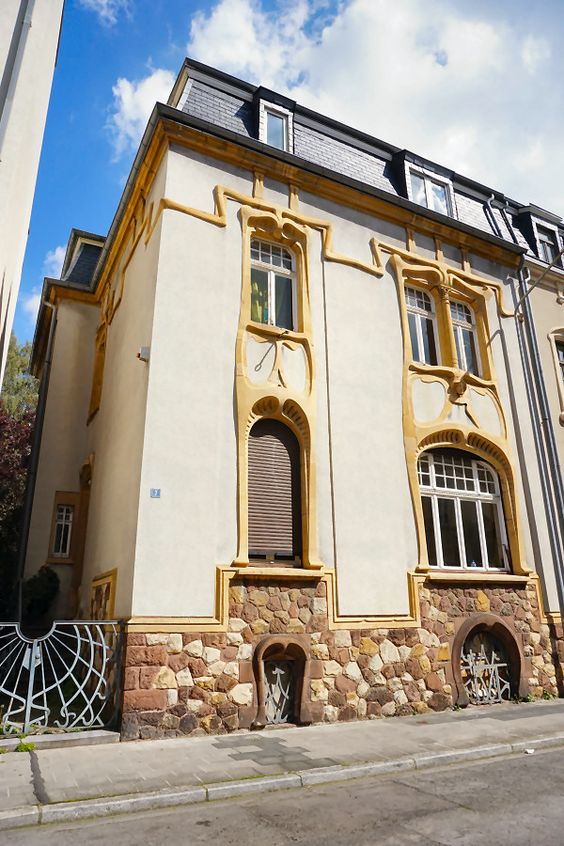#16441. Elegant Art Nouveau: A Facade with Flowing Lines and Stone Foundation

Before us stands an expressive example of Art Nouveau architecture, showcasing the characteristic features of this artistic movement from the early 20th century. The building's facade exhibits an asymmetrical composition and flowing, fluid lines in its decorative elements. Particularly noteworthy are the elaborate window frame surrounds with organic forms typical of Art Nouveau, reminiscent of plant motifs.
The color scheme of the facade is based on the contrast between the light plastered surface of the upper part and the natural stone (cobblestone) in the building's plinth. The golden decorative elements create a striking accent against the cream background of the walls. The lower part of the building is faced with natural stones of various hues, giving the foundation visual strength and textural diversity.
Architectural solutions include arched elements characteristic of Art Nouveau, curved lines, and accentuated window frames. The mansard roof with small dormer windows completes the composition, giving the building a recognizable silhouette. The openwork metal railing on the left side complements the overall style with its organic pattern.
When designing a facade for a private home, several techniques can be borrowed from this building: the use of contrasting materials (for example, combining plaster and natural stone), accentuating window openings with decorative elements, and careful consideration of the color palette with architectural details highlighted in contrasting colors. Even a simplified application of such elements can add individuality and artistic value to a modern residential house.